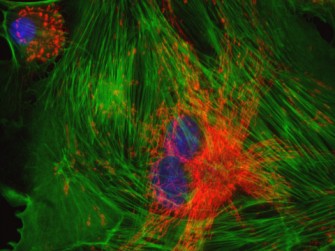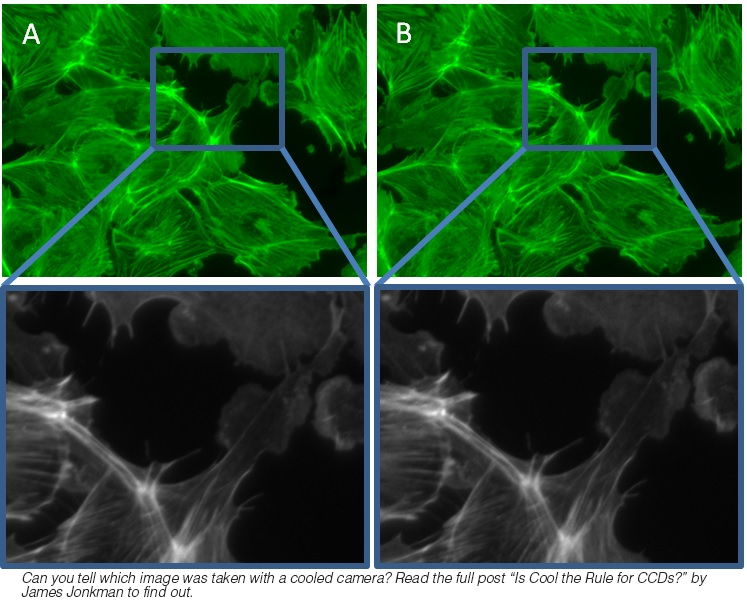For years, vendors have been creating cooled cameras to reduce the sensor temperatures and lower dark current noise, which in long exposure applications can be a large source for noise. In many life science applications, it was a necessity to ensure that the image created was as free from errors as possible to provide the level of quality that was required. Of course, there is a cost trade off for creating a high-end, specialized camera with single-stage or dual-stage cooling.
As technology has advanced, microprocessors and electronic components have shrunk and become more efficient. Sensor technologies have also improved to provide low noise output. These changes reduce the amount of dark current that is injected into the image. While there is still some level of dark current, the question becomes whether or not it is significant enough to impact the quality of the image when compared to the read noise of the sensor.
However, in many applications the requirement for a cooled camera has not been re-evaluated. Given the technological advances in the development of non-cooled cameras, many researchers will find that the uncooled cameras of today exceed the performance of older cooled cameras. By selecting a high-quality, lower cost uncooled camera to meet imaging requirements, the cost savings can be used to improve other aspects of the facility, such as the upgrade of filter cubes, higher NA objectives, computing equipment or software.
James Jonkman, M.Sc. and manager of the Advanced Optical Microscopy Facility (AOMF) for the University Health Network in Toronto, analyzed the results of cooled and uncooled cameras in his posted titled “Is Cool the Rule for CCDs?” He provides some detailed imaging examples from both types of cameras to compare the results.
The conclusion of his analysis shows that, while cooled cameras still have a place in certain applications, it is no longer necessary for every instance that it had been used in the past. If you are still using cooled cameras in your lab, maybe it is time to take a look at whether or not that requirement is still needed for the types of imaging being performed.



